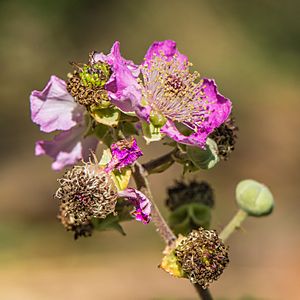June gap facts for kids

The June gap is a time, usually in June, when honey bees in places like Ireland and Great Britain find it hard to find enough food. This food is called forage, and it includes things like nectar and pollen from flowers. It's a tricky period for bees because there isn't as much food around.
Contents
June Gap: A Tricky Time for Bees
The June gap is a natural event that affects honey bees. It happens because the amount of food available to them changes throughout the year. Bees need a steady supply of nectar and pollen to make honey and feed their colonies. When this supply drops, it can be a challenge for them.
Why Does the June Gap Happen?
In spring, trees and hedges produce a huge amount of pollen and nectar. Bees love this! It helps their colonies grow very quickly. But after spring, in early summer, there's a dip in available food. This happens for a few reasons:
- Many spring flowers have finished blooming.
- Long grasses in fields can cover up and hide many wildflowers that bees would normally visit.
- The big "summer rush" of flowers, like those found in meadows, hasn't quite started yet. This rush usually begins in July and lasts through September.
So, June becomes a time when the amount of nectar and pollen available to bees is much lower than in spring or later in summer.
How Does the June Gap Affect Bees?
During the June gap, bee colonies are often very large. This is because they grew a lot during the spring when food was plentiful. With so many bees, they need a lot of food. When food becomes scarce:
- Bees might struggle to make enough honey.
- The queen bee might lay fewer eggs. This means fewer new bees are born, which can slow down the colony's growth.
- The colony might even use up its stored honey reserves if the gap is severe.
The exact timing of the June gap can change a little each year. It depends on the weather patterns, which affect when different plants bloom.
How Do Beekeepers Help During the June Gap?
Beekeepers pay close attention to their bees during this time. They need to make sure the bees have enough food and water.
- They check the amount of honey stored in the hive. If it's too low, they might give the bees sugar syrup to help them.
- They also make sure bees have access to water, which they need for cooling the hive and diluting honey.
By helping their bees through this tough period, beekeepers ensure the colonies stay strong and healthy.
Plants That Help Bees in June
Even though there's a gap, some plants still provide valuable nectar and pollen during June. These plants are very important for bees:
- Cotoneaster: These shrubs are popular in gardens and produce many small flowers.
- Pyracantha: Closely related to cotoneaster, pyracantha also has lots of flowers that bees enjoy.
- Common garden herbs: Many herbs like lavender or thyme can bloom in June.
- Perennial garden plants: Some garden flowers that come back every year can also provide food.
Planting these types of flowers in gardens can be a great way to help local honey bees and other pollinators get through the June gap.

